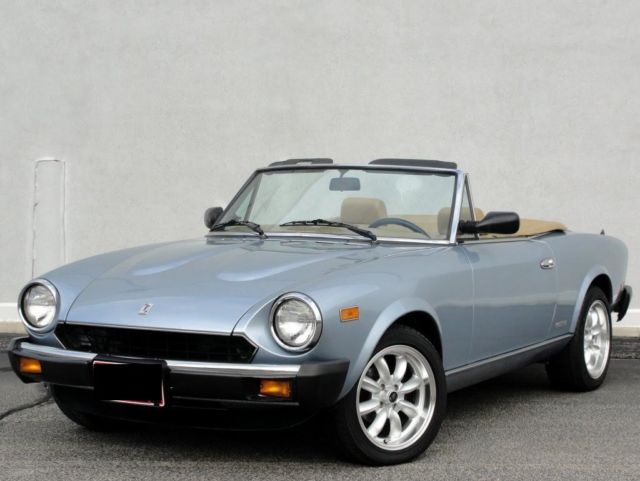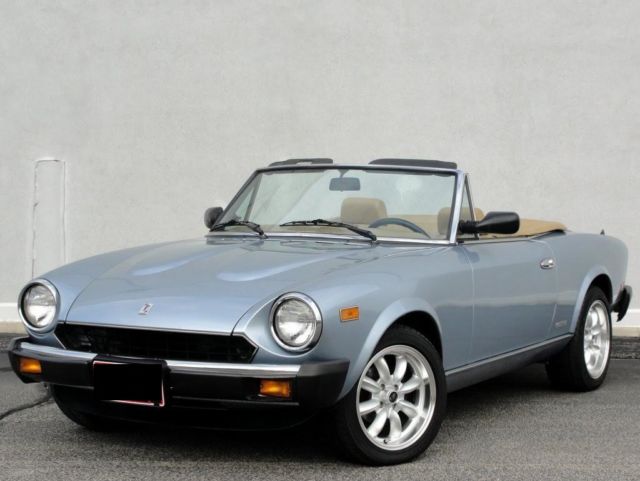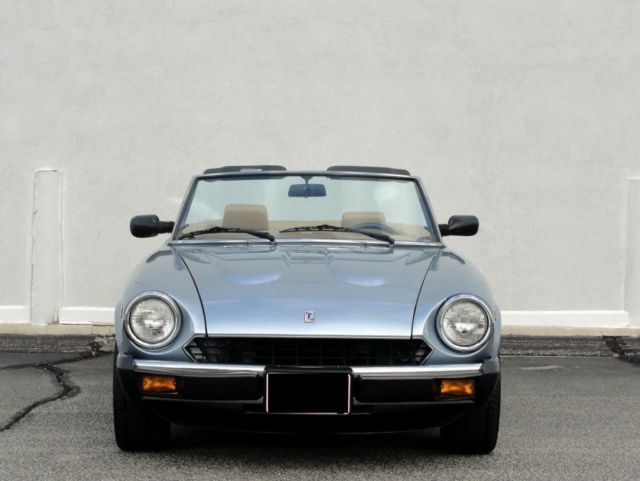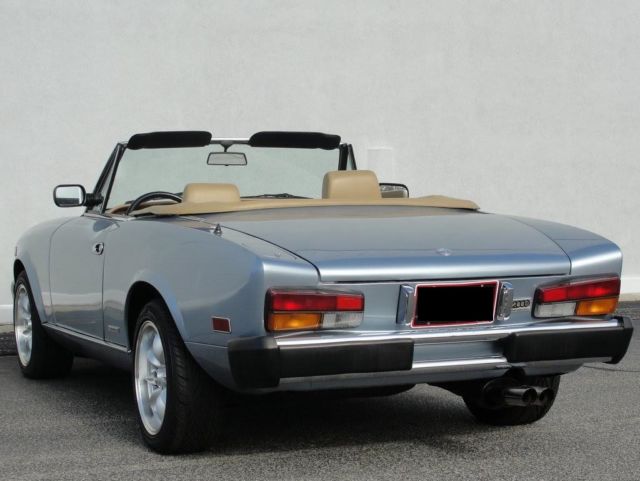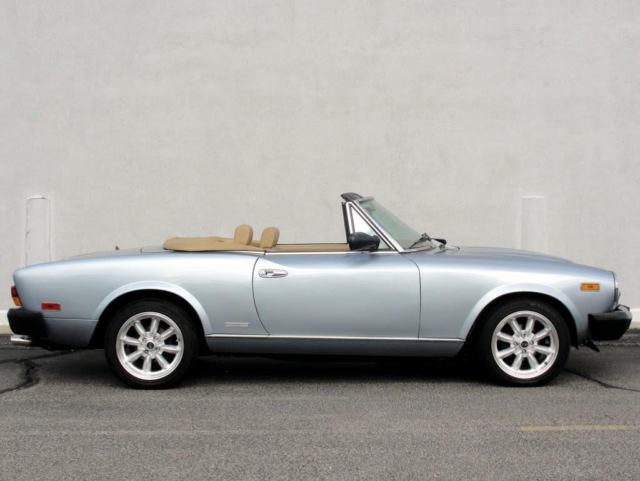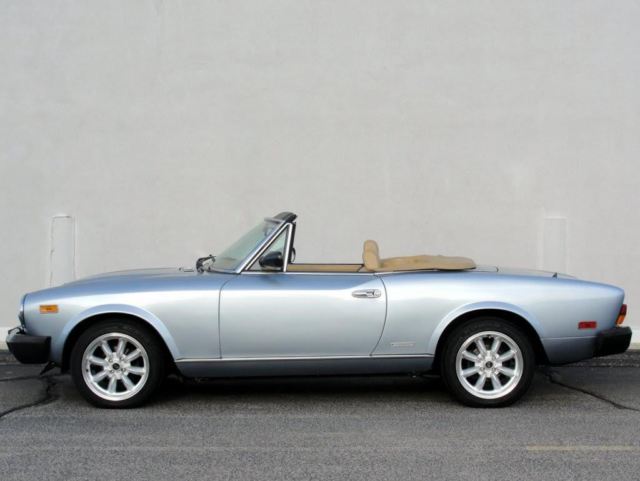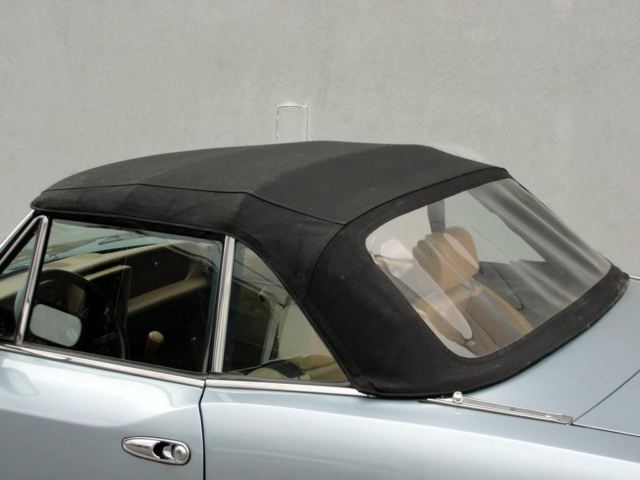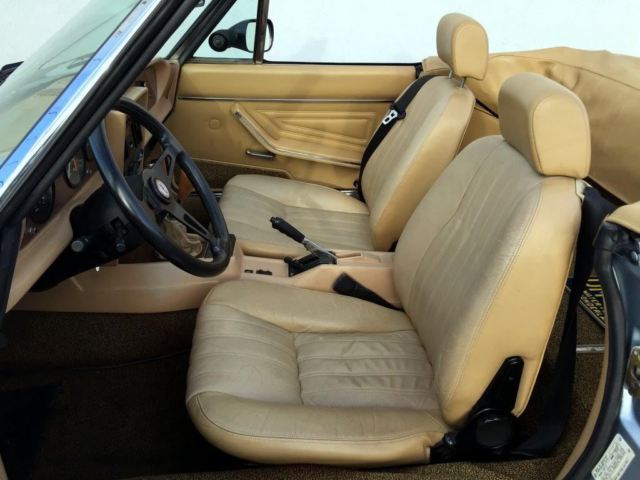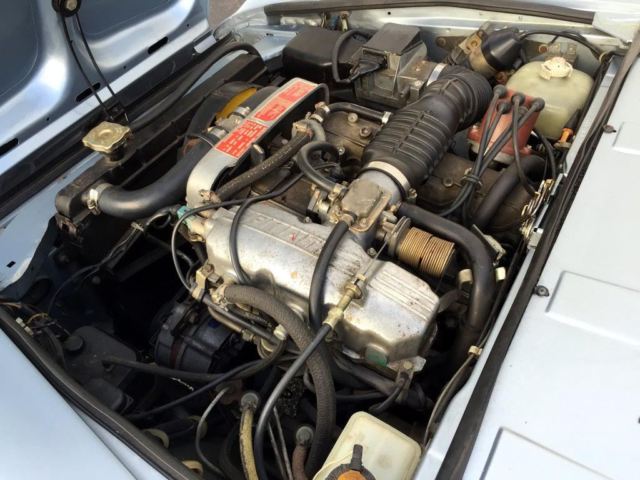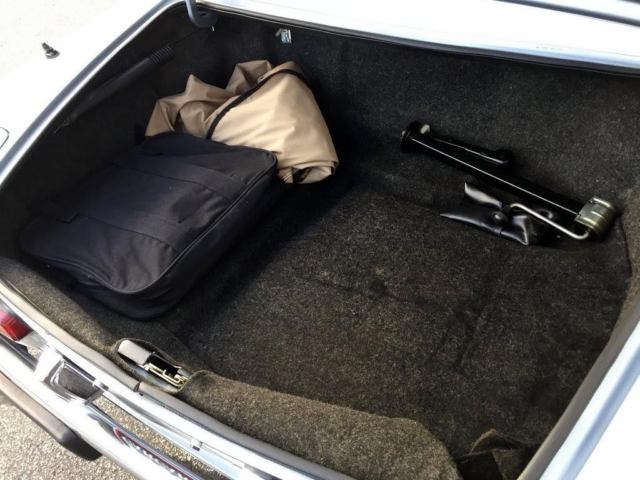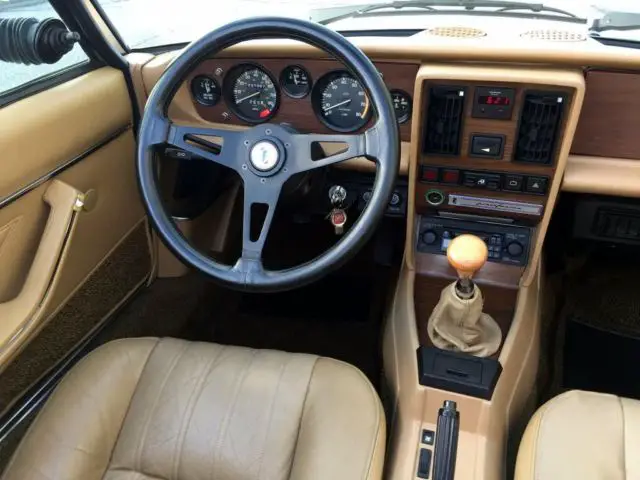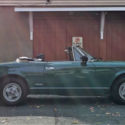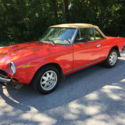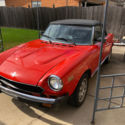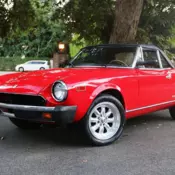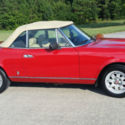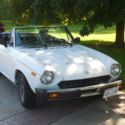1984 Fiat Pininfarina 2000 Spider
| Make: | Fiat |
| Model: | Pininfarina |
| SubModel: | 2000 Spider |
| Type: | Spider |
| Year: | 1984 |
| Mileage: | 31,840 |
| VIN: | ZFRAS00B8E5503368 |
| Color: | Light Blue |
| Cylinders: | 4 |
| Fuel: | Gasoline |
| Transmission: | Manual |
| Interior color: | Tan Leather |
| Drive side: | Left-hand drive |
| Vehicle Title: | Clear |
| Item location: | Boston, Massachusetts, United States |
1984 Fiat Pininfarina Additional Info:
Italian roadsters combine the passion and personality of an Italian sports car with the summertime enjoyment of a convertible and the Fiat Pininfarina 2000 Spider combines both of those beautifully with its engaging driving experience, stunning styling, and unique personality. This ULTRA-LOW MILEAGE EXAMPLE is a nicely documented and well cared for example. Finished in a sharp light blue over a clean tan interior that has a nice patina without being worn or ripped. The vehicle underwent a full respray a few years back and shows extremely well both inside and out. Tastefully upgraded with an Ansa exhaust, ! This fun FIat is perfect for that Italian sports car enthusiast! The 2.0L 4 cal. starts right up and runs beautifully and the 5-speed manual transmission makes this convertible quite the engaging driver. Clean, rust free, and well cared for examples of Fiat's Pininfarina 2000 Spider are few and far between!Vehicle Options:Min-lite Alloy Wheels, AM/FM Radio, Power Brakes, Reclining Seats, power window, AC
TheFiat 124 Sport Spideris amonocoque, front-engine, rear drive2+2convertiblesports car manufactured byFiat Automobilesfor model years 1966-1980. Designed and manufactured by ItaliancarrozzeriaPininfarina, the 124 Spider debuted at the November 1966Turin Auto Show. Fiat later marketed the car as the2000 Spider(1979-1982), and Pininfarina marketed the car at the end of its production as thePininfarina Spider Azzura(1983-1985).
The 124 Spider was sold in Europe and the U.S. from its introduction until the 1975 model year when it was modified to comply with newU.S.regulations and no European version was produced. Sales in Europe resumed when Pininfarina took over production in 1983 under the name Pininfarina Europa Spider.[3]
In 2015 asuccessorof the Fiat 124 Spider was presented at theLA Auto Show.[4]
Engines[edit]Thefour-cylinder engineused in thespiderandcoupéis adouble overhead cam, aluminumcrossflowhead version of the sedan's pushrod unit. It started in 1966 with a capacity of 1438cc progressively increasing to 1608cc in 1970 (although this was reduced to 1,592cc in 1973), 1,756cc in 1974 and finally 1,995cc in 1979. TheFiat twin cam enginewas designed by ex-Ferrariengineer Aurelio Lampredi.[6]Bosch fuel injection replaced the previously used Weber carburetors midway through 1980. In 1981 and 1982, Fiat USA, Inc. partnered with Legend Industries to create approximately 700 turbo models for US markets. There was also a supercharged model called "Volumex" offered toward the end of production, which was sold only in Europe, where it cost 35% more than a regular, fuel-injected Spidereuropa.[a]This family of engines remained in production into the 1990s giving it one of the longest production runs in automotive history. The double overhead cam (DOHC) version was the first mass manufactured DOHC to utilize reinforced rubber timing belts, an innovation that would come into nearly universal use in the decades after its introduction. Its family powered race cars such as the FIAT 131 Mirafiori, 124 Special T, Lancia Beta Montecarlo, Delta Integrale and many others.
Suspension is conventional by unequal length wishbones and coil over damper at the front and by coil sprung live rear axle at the rear which is located by a transverse link (Panhard rod) and two pairs of forward extending radius rods to react braking and acceleration and to control axle wind-up.
